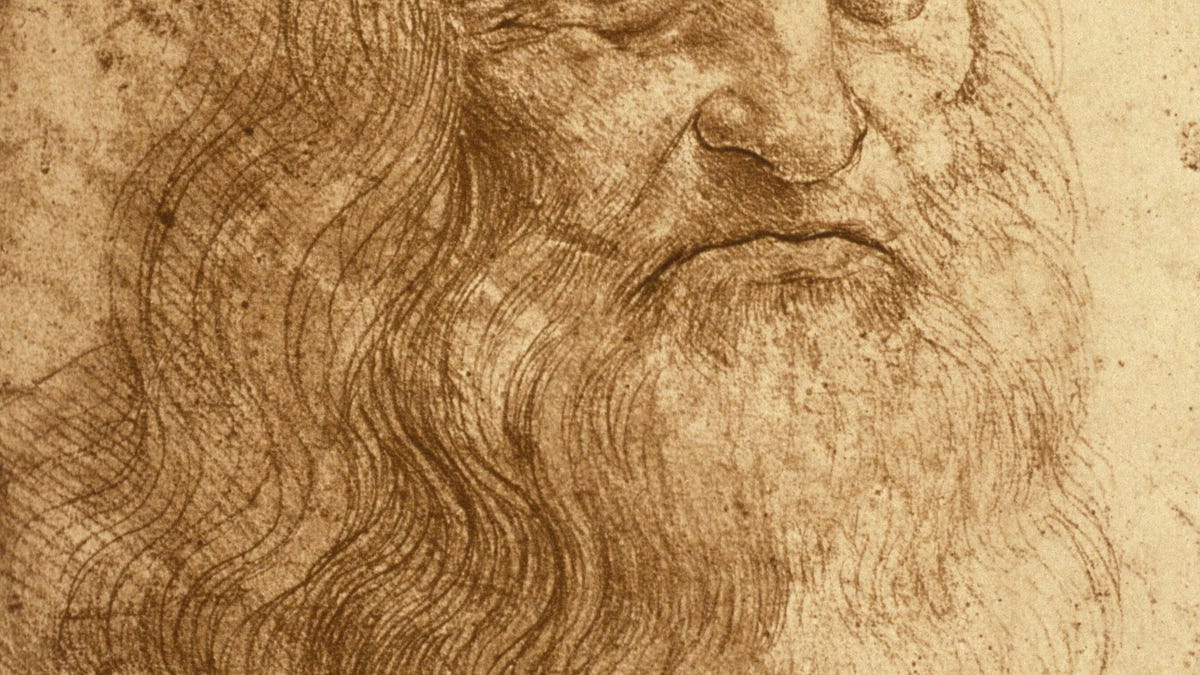Leonardo Da Vinci has 14 living descendants, DNA study finds
Pretty remarkable discovery, since he had no known children and his remains have been missing since the 18th century.

Leonardo Da Vinci in a self-portrait.
A DNA study of Leonardo Da Vinci's family that stretches back nearly seven centuries has turned up 14 living descendants of the Renaissance artist. Researchers hope the study will yield a greater understanding of the man who gave us the Mona Lisa and The Last Supper, as well as famous sketches of the male human's proportions, a parachute and helicopter 400 years before it was invented.
The genealogical research, lead by art historians Alessandro Vezzosi and Agnese Sabato and published this week in the journal Human Evolution, stretches back 21 generations and across five family branches.
Their research traced da Vinci's male lineage to his great-great-great-grandfather, Michele, who was born in 1331 and the first to bear the family name. The living descendants they discovered range in age from 1 to 85.
The hope is that mapping the great painter, scientist, engineer and architect's genome will give art historians a greater understanding of the man and how his health contributed to his artistry. They're hoping the DNA they've uncovered will help shed some light on his extraordinary vision, left-handedness and premature aging, among other questions.
The discovery is remarkable, given that da Vinci's remains have been missing since the 18th century and he had no known children. Da Vinci was born out of wedlock in 1452 near the Tuscan hill town of Vinci. His father, Piero, was a Florentine attorney and notary. And apparently, he was prolific, as da Vinci had at least 22 half-brothers.
After da Vinci died in 1519, he was buried in the chapel of Saint-Florentin at the Chateau d'Amboise in Frances's Loire valley, but the chapel was destroyed during the French Revolution more than 200 years later. Bones believed to be da Vinci's were retrieved and interred in the chateau's smaller chapel, Saint-Hubert.
The researchers are working with the Leonardo Da Vinci DNA Project to determine whether the remains interred at Saint-Hubert chapel are those of da Vinci.
Researchers documented 21 generations of Leonardo Da Vinci's family.
The five family branches researchers identified were traced through Piero (5th generation) and half-brother Domenico (6th). Since the 15th generation, data has been collected on over 225 individuals, the researchers said.
Similar research revealed in 2016 identified 35 living relatives of da Vinci, mostly indirect descendants, including women and Italian film director Franco Zeffirelli.
"They were not people who could give us useful information on Leonardo's DNA and in particular on the Y-chromosome, which is transmitted to male descendants and remains almost unchanged for 25 generations," Vezzosi told Italian wire service ANSA.
Comparing the Y chromosome of living male relatives with that of their ancestors could map an uninterrupted family line and identify da Vinci's own Y chromosome marker, the researchers explained.
Da Vinci's descendants still live in the Tuscan region of his birth and include farmers, office workers, an upholsterer and an artist. While the family name was originally rooted in its place of origin, the "da" was discarded over time.
Geovanni Vinci, 62, is also an artist but says he doesn't think he has "anything in common with Leonardo."
"Maybe for some of my work Leonardo turned in his grave -- but for the rest I hope he is proud," he told the Evening Standard.

